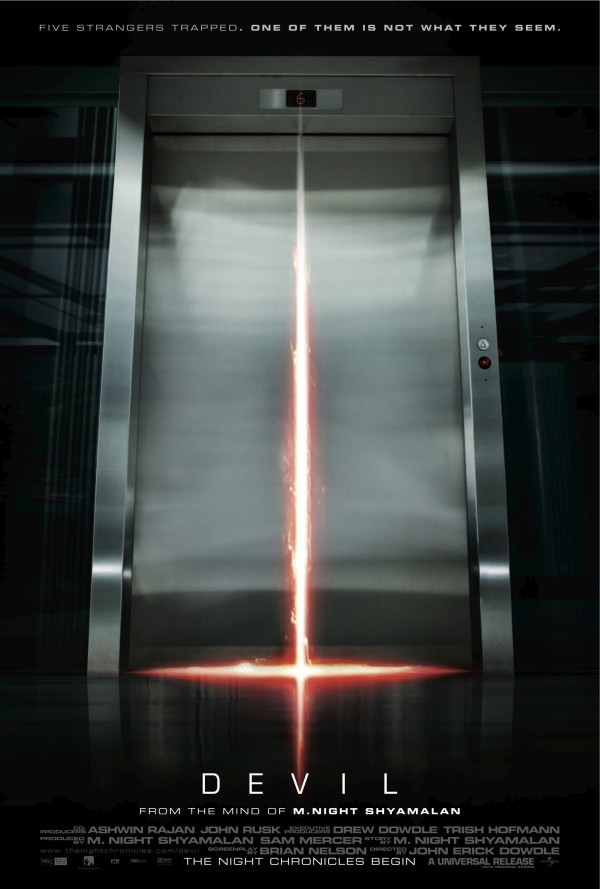This film combines supernatural horror with the time-honored formula of detective stories, which is the “locked room” mystery. In this case, the locked room is an elevator in which five people are stranded during a power outage. As time goes on, and evil acts accumulate, it becomes clear that one of the people in the elevator is in fact working in service to darkness and impurity.
M. Night Shyamalan prides himself in making atmospheric films with semi-philosophical ideas lurking under the surface, but it is safer to say that Devil takes a Miltonian approach to expressing a religious message that ends up being more gnostic than the convenient externalization of Satan which with modern religion addresses evil. While the intent of the film is made clear, it strays far from the two thwarts to quality expression of idea in film, which are the blunt propaganda of contemporary religious cinema and the concealed satisfaction with deconstruction of all values — with the breakdown supplanting re-evaluation — that is the hallmark of Hollywood. In this film, Satan plays an active role in the judgment of humanity.
Locked-room mysteries tend to be research projects into either or both of the psychology of the people in the room or their pasts, looking for a bridge between characters. The sixth character here is an investigating police officer who struggles daily with the agony of loss of his wife and child in a DUI hit and run accident. Seen through his eyes, the presence of evil becomes less supernatural and more a case of human self-absorption causing negative results in reality as illusion collides with consistency. Locked outside of the elevator and many floors away, he investigates the people in the elevator with the help of telephones, the internet and other people, searching to get to the bottom of the mystery.
The result is less atmospheric than a fast-paced mystery or a mid-paced thriller, with enough gore and suspense to drive the plot forward and make solving the mystery seem an urgent necessity. Whether these actors are as good as their craft as it seems, or it is the fusion of director and actors, they achieve the greatest of all cinematic triumphs which is true suspension of disbelief: unlike most movies, they do not seem like actors, even stage actors as the more celebrated movies display. Instead they come across as everyday people who speak their lines more clearly and make their gestures more visible. Tightly edited, the film avoids the use of tedium to offset the suspense, and thankfully the script avoids any of the “instant replay” dialogue that more confused films used to replay complex plots. Instead, it moves along normally, with the tension of an observer who increasingly sees his task as more of a battle between good and evil than an everyday mystery. The conclusion is neither a baffling surprise nor as predictable as the average film, and continues the suspense until it can streamline into a sustaining emotional ambiance.
4 CommentsTags: devil, m. night shyamalan, movies


